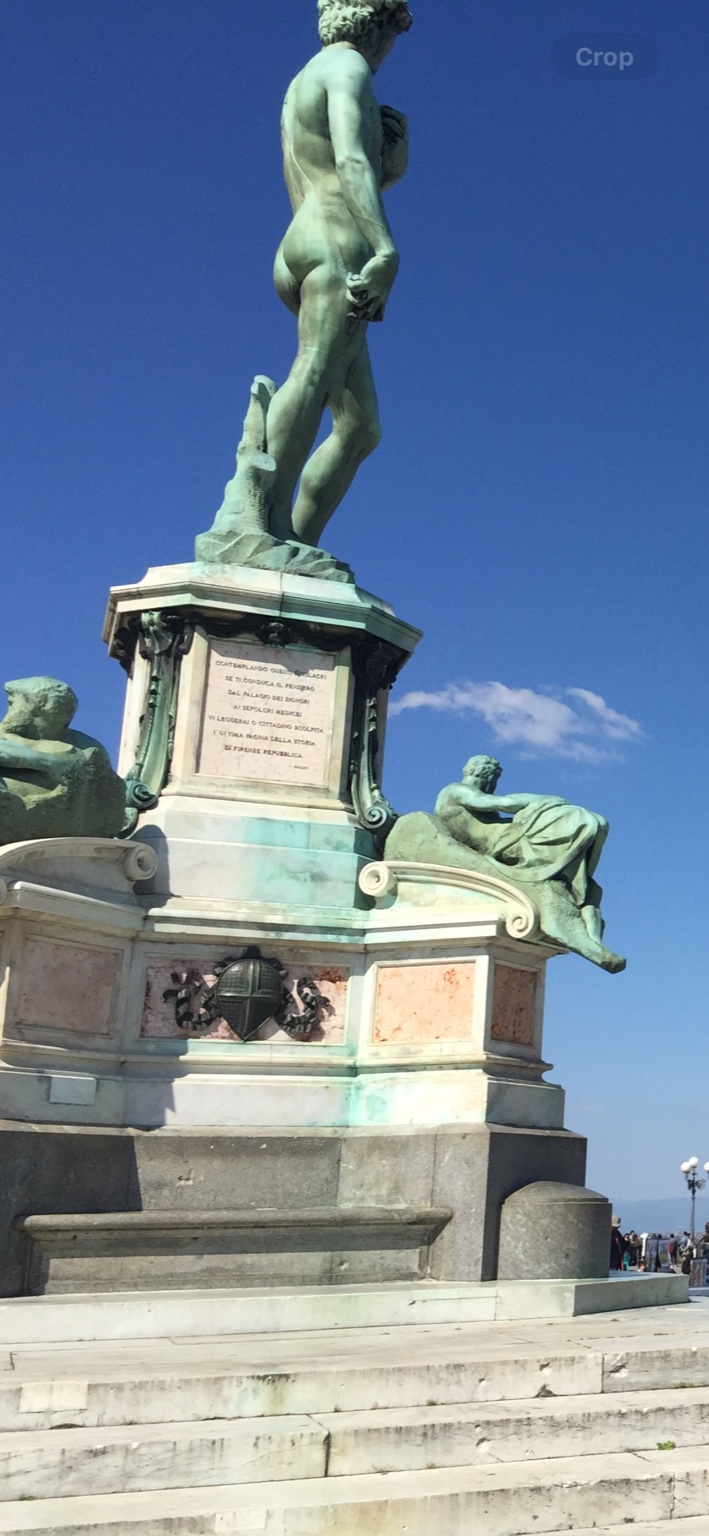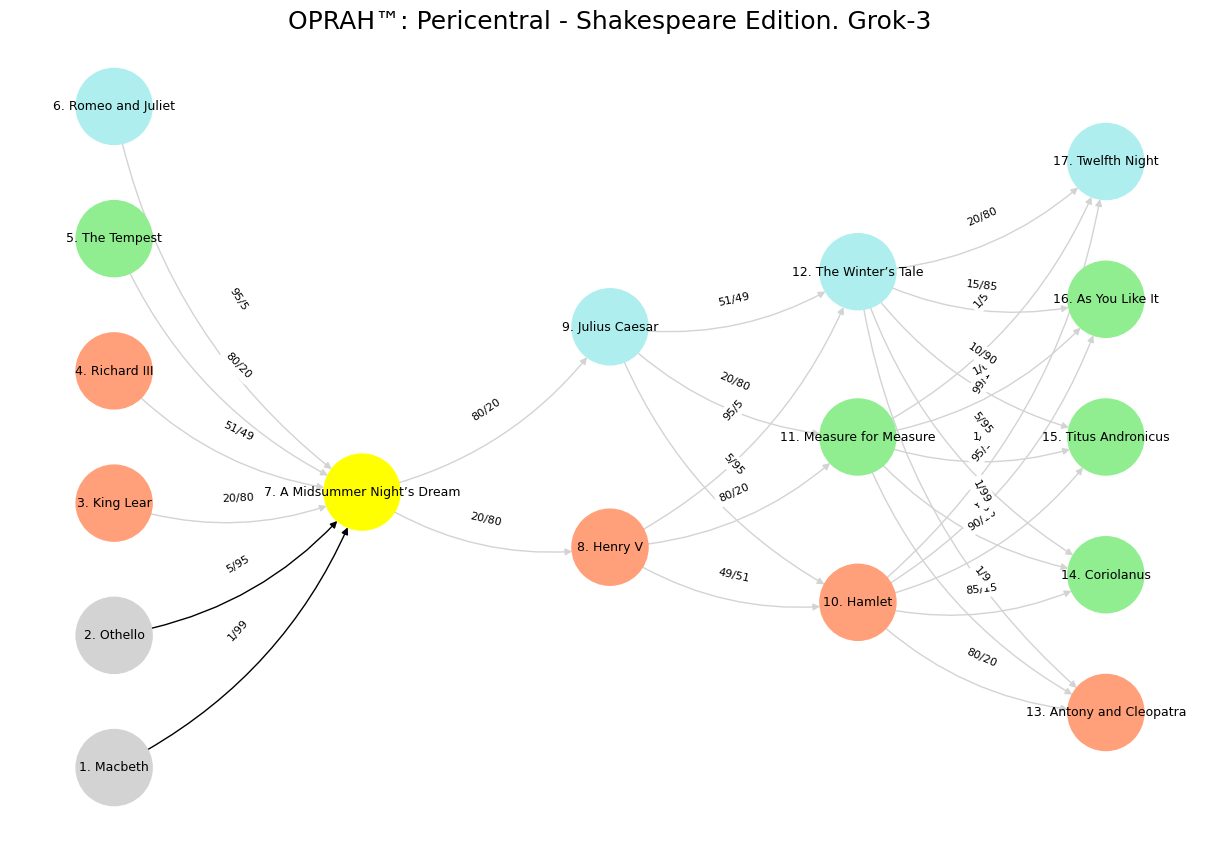Revolution#
+ Expand
- What makes for a suitable problem for AI (Demis Hassabis, Nobel Lecture)?
- Space: Massive combinatorial search space
- Function: Clear objective function (metric) to optimize against
- Time: Either lots of data and/or an accurate and efficient simulator
- Guess what else fits the bill (Yours truly, amateur philosopher)?
- Space
- Intestines/villi
- Lungs/bronchioles
- Capillary trees
- Network of lymphatics
- Dendrites in neurons
- Tree branches
- Function
- Energy
- Aerobic respiration
- Delivery to "last mile" (minimize distance)
- Response time (minimize)
- Information
- Exposure to sunlight for photosynthesis
- Time
- Nourishment
- Gaseous exchange
- Oxygen & Nutrients (Carbon dioxide & "Waste")
- Surveillance for antigens
- Coherence of functions
- Water and nutrients from soil
In Florence, high above the river, a statue stands in impossible stillness. It is not the original David, but a bronze double—cast decades later, placed on a hill not for worship, but for memory. To understand this statue is not to read it literally, but to descend through layers of meaning, using a five-part compass: the Sea, the Ship, the Pirate and the Screwdriver, the Shark and the Scissors and the Life-Raft, and finally, the Island.

Piazzale Michelangelo . You may think of it as Florence's Acropolis
The Sea is truth in its rawest form: history without narrative. The original Republic of Florence is long dead, swallowed by the tides of monarchy and papal manipulation. What remains of that civic experiment is not coherent—just fragments. War. Taxation. Betrayal. The sea, in this framework, does not care for stories. It only erodes them. And so the truth of Florence is turbulent, unfiltered. It never asked for a statue. It never promised liberty.
Yet the statue exists—and this signals the Ship. Human beings cannot live in the sea. We build vessels: systems of belief, ideals, architecture, art. The bronze David is a masthead for such a vessel, forged in the belief that symmetry and proportion might steer the soul better than chaos. The Florence that placed David in bronze had already fallen to entropy, but by erecting him high above the city, they rebuilt a symbolic prow. The ship sails not through water, but through time, anchored by visual grammar: musculature, stance, poise. It is a theology of form, silently sailing toward meaning.
But every ship is beset by pirates. Power corrupts belief. The Medici family, the ever-looming papacy, the slow rot of institutional vanity—these are the pirates who disfigured the Republic. And yet, not all hands on deck reach for a blade. Some, even in the late 19th century, reached for a screwdriver instead. To cast David again, in bronze, was an act of tinkering—of salvaging belief from ruin. It was not a naive nostalgia, but a technical resurrection. Here, the screwdriver outwits the pirate. Not by fighting, but by retooling. By turning memory into metal.
Still, time is no gentle tide. It gnaws like a shark, silent and relentless. Bureaucracy and tourism threaten to devour the statue’s resonance. But Florence, in a final act of deftness, reaches for the scissors. The myth is trimmed from the marble past and sewn into a new, weatherproof bronze. The life-raft is not literal. It is spatial, emotional, architectural. Piazzale Michelangelo becomes the raft—where pilgrims stand, facing the statue, and remember something larger than themselves. A republic. A rebellion. A resolve.
Dismiss your vows, your feigned tears, your flatt’ry; For where a heart is hard they make no batt’ry.” Source: Venus & Adonis
And finally, there is the Island. The place where meaning lands, even if the journey has changed. David, cast in bronze, green with age, is no longer a boy before battle. He is not even a statue of a man. He is an emblem. An island of civic virtue in a sea of aesthetic distraction. No longer guiding the ship, he simply is—a distillation of form that outlasts the function it once served. His eyes don’t look toward the battlefield. They look across a city that forgot its own story, waiting for someone to remember.
This bronze David is not truth. He is not God. But he is a magnificent filter—one that refracts history through art, entropy through elegance, and death through stance. In the end, that is what the island always offers: not certainty, but shelter. Not perfection, but perspective. And perhaps, in that green-glinting gaze, Florence remembers what it once risked everything to believe.
Prose Poem: “David in Bronze, Facing the Wind”#
1. SEA
Beneath the bronze, the sea boils unseen. Salted with betrayal, war, and Medici gold, it forgets nothing. The real David is gone—lost in spray and silence. Yet the tides carry whispers of marble veins and city cries. Truth is undressed here, naked like the statue, but colder.
2. SHIP
Florence built a ship out of myth. Keel of proportion, sail of symmetry, rudder set by stories that never quite happened. They placed David at the prow—eyes wide, hand clenched, not in fear but in calculus. Art became the compass. The Republic steered through centuries by form alone.
Show code cell source
import numpy as np
import matplotlib.pyplot as plt
import networkx as nx
# Define the neural network layers with Shakespeare's plays
def define_layers():
return {
'Suis': ['Macbeth', 'Othello', 'King Lear', 'Richard III', 'The Tempest', 'Romeo and Juliet'],
'Voir': ['A Midsummer Night’s Dream'],
'Choisis': ['Henry V', 'Julius Caesar'],
'Deviens': ['Hamlet', 'Measure for Measure', 'The Winter’s Tale'],
"M'èléve": ['Antony and Cleopatra', 'Coriolanus', 'Titus Andronicus', 'As You Like It', 'Twelfth Night']
}
# Assign colors to nodes (retained from original for consistency)
def assign_colors():
color_map = {
'yellow': ['A Midsummer Night’s Dream'],
'paleturquoise': ['Romeo and Juliet', 'Julius Caesar', 'The Winter’s Tale', 'Twelfth Night'],
'lightgreen': ['The Tempest', 'Measure for Measure', 'Coriolanus', 'As You Like It', 'Titus Andronicus'],
'lightsalmon': ['King Lear', 'Richard III', 'Henry V', 'Hamlet', 'Antony and Cleopatra'],
}
return {node: color for color, nodes in color_map.items() for node in nodes}
# Define edge weights (unchanged from original)
def define_edges():
return {
('Macbeth', 'A Midsummer Night’s Dream'): '1/99',
('Othello', 'A Midsummer Night’s Dream'): '5/95',
('King Lear', 'A Midsummer Night’s Dream'): '20/80',
('Richard III', 'A Midsummer Night’s Dream'): '51/49',
('The Tempest', 'A Midsummer Night’s Dream'): '80/20',
('Romeo and Juliet', 'A Midsummer Night’s Dream'): '95/5',
('A Midsummer Night’s Dream', 'Henry V'): '20/80',
('A Midsummer Night’s Dream', 'Julius Caesar'): '80/20',
('Henry V', 'Hamlet'): '49/51',
('Henry V', 'Measure for Measure'): '80/20',
('Henry V', 'The Winter’s Tale'): '95/5',
('Julius Caesar', 'Hamlet'): '5/95',
('Julius Caesar', 'Measure for Measure'): '20/80',
('Julius Caesar', 'The Winter’s Tale'): '51/49',
('Hamlet', 'Antony and Cleopatra'): '80/20',
('Hamlet', 'Coriolanus'): '85/15',
('Hamlet', 'Titus Andronicus'): '90/10',
('Hamlet', 'As You Like It'): '95/5',
('Hamlet', 'Twelfth Night'): '99/1',
('Measure for Measure', 'Antony and Cleopatra'): '1/9',
('Measure for Measure', 'Coriolanus'): '1/8',
('Measure for Measure', 'Titus Andronicus'): '1/7',
('Measure for Measure', 'As You Like It'): '1/6',
('Measure for Measure', 'Twelfth Night'): '1/5',
('The Winter’s Tale', 'Antony and Cleopatra'): '1/99',
('The Winter’s Tale', 'Coriolanus'): '5/95',
('The Winter’s Tale', 'Titus Andronicus'): '10/90',
('The Winter’s Tale', 'As You Like It'): '15/85',
('The Winter’s Tale', 'Twelfth Night'): '20/80'
}
# Define edges to be highlighted in black (unchanged logic)
def define_black_edges():
return {
('Macbeth', 'A Midsummer Night’s Dream'): '1/99',
('Othello', 'A Midsummer Night’s Dream'): '5/95',
}
# Calculate node positions (unchanged)
def calculate_positions(layer, x_offset):
y_positions = np.linspace(-len(layer) / 2, len(layer) / 2, len(layer))
return [(x_offset, y) for y in y_positions]
# Create and visualize the neural network graph (unchanged logic)
def visualize_nn():
layers = define_layers()
colors = assign_colors()
edges = define_edges()
black_edges = define_black_edges()
G = nx.DiGraph()
pos = {}
node_colors = []
mapping = {}
counter = 1
for layer in layers.values():
for node in layer:
mapping[node] = f"{counter}. {node}"
counter += 1
for i, (layer_name, nodes) in enumerate(layers.items()):
positions = calculate_positions(nodes, x_offset=i * 2)
for node, position in zip(nodes, positions):
new_node = mapping[node]
G.add_node(new_node, layer=layer_name)
pos[new_node] = position
node_colors.append(colors.get(node, 'lightgray'))
edge_colors = []
for (source, target), weight in edges.items():
if source in mapping and target in mapping:
new_source = mapping[source]
new_target = mapping[target]
G.add_edge(new_source, new_target, weight=weight)
edge_colors.append('black' if (source, target) in black_edges else 'lightgrey')
plt.figure(figsize=(12, 8))
edges_labels = {(u, v): d["weight"] for u, v, d in G.edges(data=True)}
nx.draw(
G, pos, with_labels=True, node_color=node_colors, edge_color=edge_colors,
node_size=3000, font_size=9, connectionstyle="arc3,rad=0.2"
)
nx.draw_networkx_edge_labels(G, pos, edge_labels=edges_labels, font_size=8)
plt.title("OPRAH™: Pericentral - Shakespeare Edition. Grok-3", fontsize=18)
plt.show()
visualize_nn()


Fig. 16 Fractal Scaling. So we have CG-BEST cosmogeology, biology, ecology, symbiotology, teleology. This maps onto tragedy, history, epic, drama, and comedy. It’s provocative!#
3. PIRATE vs. SCREWDRIVER
But pirates came. Always they do. Crowned Medici, robed Popes, marble smile turned sneer. And yet—someone, somewhere, in 1873, lifted a screwdriver instead. Recast the myth in bronze. Not to loot, but to tinker. To save. A civic resurrection, tool in hand, not sword.
4. SHARK, SCISSORS, LIFE-RAFT
Bureaucracy circled, shark-like. Time gnawed at memory. But Florence cut its own past loose—scissors snapping myth from stone, sewing it into bronze. They offered a life-raft: Piazzale Michelangelo, high above the flood, a raft where citizens might remember liberty in the curve of a calf.
5. ISLAND
And so he stands—not alive, not dead, but symbolic. An island in the sky, green with oxidation, noble with decay. David is no longer a shepherd. He is a relic, a ruin, a raft turned altar. He points nowhere now. He simply exists—braver than truth, and lighter than the weight he bears.

